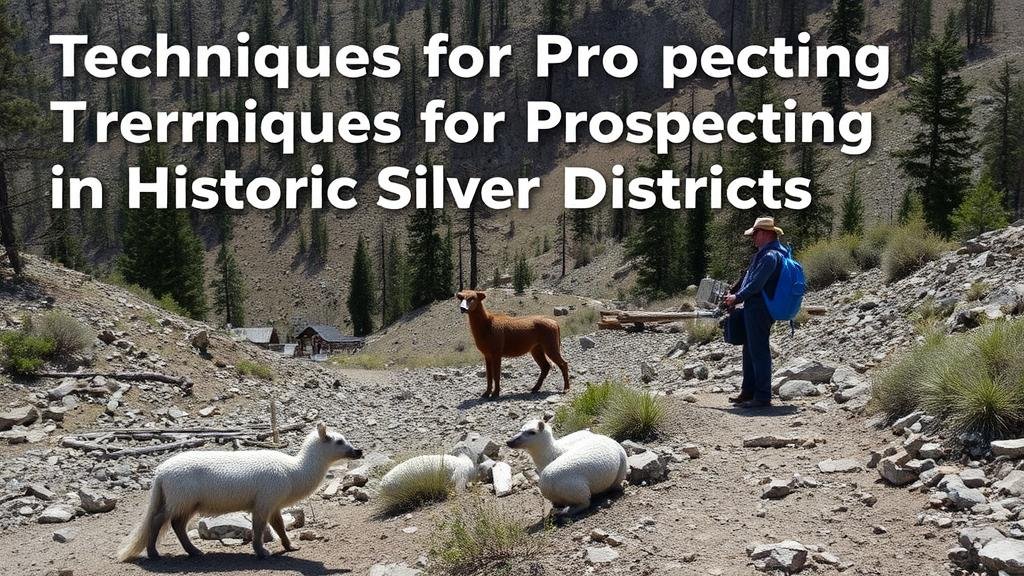Techniques for Prospecting in Historic Silver Districts
Techniques for Prospecting in Historic Silver Districts
The art of prospecting in historic silver districts combines traditional mining knowledge with modern technology. This sector has seen renewed interest due to rising silver prices and advancements in exploration techniques. This article outlines effective methods for prospecting in these regions, supported by case studies and real-world applications.
Understanding the Geology of Silver Deposits
Before commencing any prospecting activity, it is essential to comprehend the geological formations that typically host silver deposits. Silver often occurs in association with other metals such as lead and zinc, commonly found in hydrothermal veins. Familiarizing oneself with these formations is critical.
- Epithermal deposits: Formed from volcanic activity, these are often rich in silver and found in areas with historical mining.
- Polymetallic ores: Containing a blend of metals, these deposits can provide insight into the presence of silver.
For example, the Comstock Lode in Nevada is a historic silver district where such geological formations were thoroughly studied, leading to extensive silver extraction in the 19th century.
Utilizing Modern Prospecting Techniques
Modern technology has dramatically improved the ability to locate silver deposits. Techniques include:
- Geophysical Surveys: Electromagnetic and resistivity surveys can detect changes in the subsurface caused by minerals.
- Geochemical Analysis: Soil and rock samples are analyzed for trace elements associated with silver deposits.
- GIS Mapping: Geographic Information Systems can layer various geological data, helping identify potential mining sites.
For example, the use of geophysical surveying methods has been pivotal in identifying new sites in historic districts previously deemed exhausted.
Historical Research and Local Knowledge
Researching historical mining records and collaborating with local historians can unveil valuable insights into past mining operations. Knowledge of past practices can offer clues to unexplored or overlooked areas.
- Mining Claims and Patents: An examination of old claims can indicate areas that were once productive.
- Oral Histories: Interviews with local prospectors and miners can yield anecdotal evidence of promising locations.
For example, in the Silverton District in Colorado, understanding the history of silver extraction led modern prospectors to rediscover veins that had been forgotten after extensive mining efforts in the 1800s.
Field Techniques for Sampling and Testing
Once potential areas have been identified, fieldwork becomes necessary. Sampling is crucial in determining the viability of a site. Techniques include:
- Stream Sediment Sampling: Analyzing sediments can indicate upstream mineralization.
- Outcrop Sampling: Collecting samples from exposed rock faces can provide direct evidence of the ore presence.
- Drilling: Core drilling offers precise information about the composition and extent of silver deposits.
For example, prospectors often utilize stream sediment sampling in historic districts, such as the Tonopah Silver District in Nevada, where initial findings can lead to more extensive surveys.
Environmental Considerations and Regulations
Prospectors must adhere to local environmental regulations to mitigate ecological impact. Understanding and complying with regulations is essential for sustainable prospecting practices.
- Permitting: Obtaining the necessary permits before beginning prospecting is mandatory.
- Environmental Impact Assessments: Conducting assessments can aid in minimizing harm to local ecosystems.
In California, prospectors in the historic Sierra Nevada region are required to undergo stringent assessment processes to ensure that biodiversity and site integrity are preserved.
Networking and Community Engagement
Building relationships with local communities and fellow prospectors can enhance knowledge sharing and promote good practices in the area. Networking can take various forms:
- Joining Prospecting Clubs: These organizations often provide resources, knowledge, and support.
- Attending Conferences and Workshops: Professional gatherings can present current trends and technologies in the mining sector.
For example, the New Mexico Mining Association offers seminars on current best practices in prospecting, which can be invaluable for newcomers.
Conclusion
Prospecting in historic silver districts requires a combination of geological knowledge, modern technology, and community involvement. By employing the techniques discussed, prospectors can improve their chances of success while preserving the integrity of the environment and local history. Engaging in thorough research, utilizing advanced technology, and adhering to regulatory standards will lead to sustainable and effective prospecting strategies. As the market for silver continues to evolve, so too should the methodologies employed by those seeking to unearth its rich history and resources.



